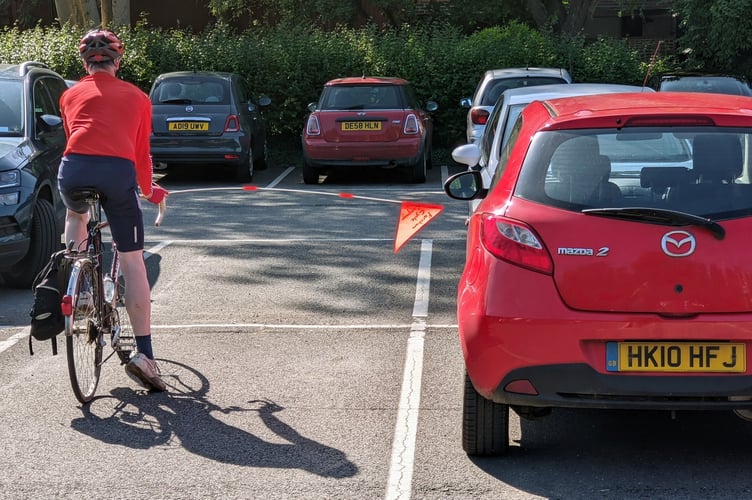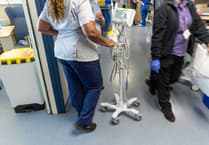The government has just relaunched its ‘Think’ campaign with the slogan ‘Travel like you know them’ to remind drivers that every cyclist is actually a person, and they might even be one of your friends or family members.
In Farnham’s intensely crowded town centre, drivers are still required to leave a MINIMUM 1.5-metre gap between the outer extremity of a bike (usually the handlebars) and the outer extremity of the car (usually the wing mirror).
The photo above demonstrates 1.5m is almost the width of a small car and might be needed if the person on a bike has to suddenly swerve around a pothole.
This rule is not optional in the Highway Code and it might mean the driver has to wait behind until it’s safe to pass or risk points on their licence if they try to squeeze past without crossing the white line.
After all, rule H1 of the Highway Code says that ‘the vehicle that does the most harm bears the greatest responsibility’ for any accidents – in this case, the car!
Of course, segregated cycle tracks, or cycle routes using quiet streets like Red Lion Lane, would avoid this whole situation as the person on a bike wouldn’t be in front of the car at all.
Farnham Cycle Campaign has been pushing for this for almost five years and the slow, grinding process of agreeing with the county councillors and the Farnham Infrastructure Programme (FIP) where new segregated cycle tracks should be located is under way.
Two public workshops have been held so far and maybe we will get the dates for the last two workshops sometime in September. But as far as we can see, there is little urgency in completing the plans on their side.
The FIP ‘town centre’ project will widen pavements and provide an improved pedestrian experience but it will also restrict the number of cars that can travel in the town centre.
This project should start construction in 2025, coupled with several new housing estates, all outside a comfortable walking distance of the town centre.
So it is reasonable to assume more cars but less road capacity will mean more car congestion in the town from 2025.
So alternatives to driving, like travelling by bike, could potentially become more attractive.
But given the current rate of progress, cycle tracks won’t be built until at least the year after the town centre project because no bids for government funding for cycle tracks are likely to take place until late 2024!
This will mean a safer cycling option won’t be available when the car congestion occurs – and also that bikes will still be sharing the same roadspace as cars.
The cyclist in the photo is a lead rider of one of the many U3A cycle groups in Farnham. If members of the public are interested in taking part in organised cycle rides, the U3A cater for a wide range of different abilities.
These take place on Mondays (Bourne Green), Wednesdays (Maltings) and Thursdays (various locations and distances).
Please see Farnham U3A website for details.
Alternatively, the Electric Cycle Cafe in Downing Street has just created a new noticeboard where you can see a list of these groups – and other local cycle groups are welcome to post details of their rides free of charge.




